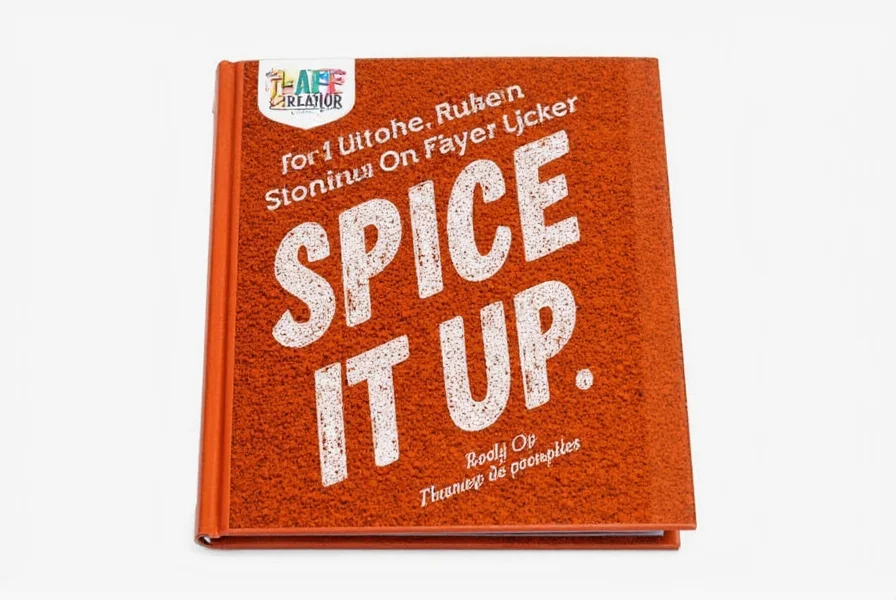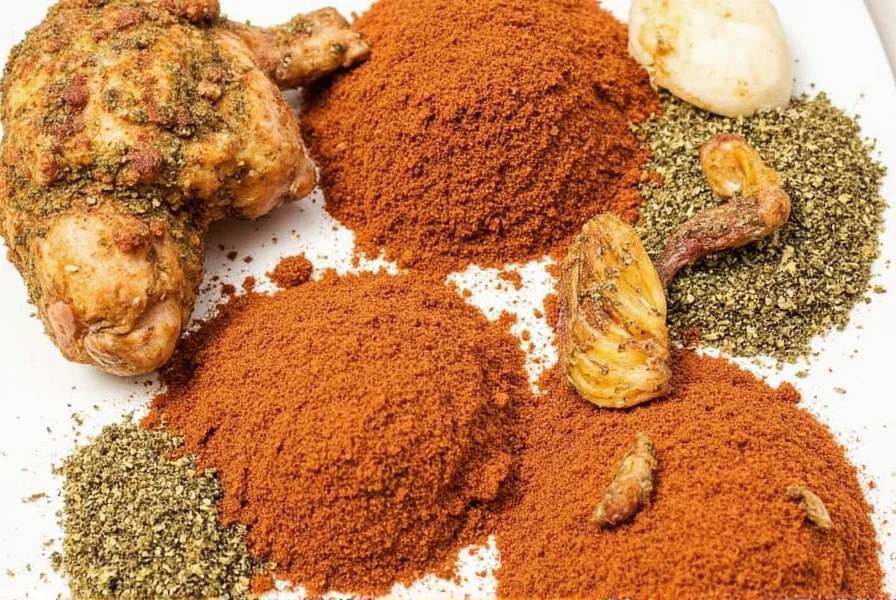Table of Contents
- Introduction
- What Is a Rub, Anyway?
- Why Use a Rub on Chicken?
- Top 5 Spice Blends for Rubbing on Chicken
- How to Apply a Rub Like a Pro
- Pairing Rubs with Cooking Styles
- Buying Guide: Choosing the Perfect Rub
- Frequently Asked Questions About Chicken Rubs
- Conclusion
Introduction
A rub on chicken is a dry mixture of spices, herbs, salt, and sugar applied to the surface of chicken before cooking to enhance flavor and create a crispy crust. Unlike marinades, rubs work quickly without lengthy marinating times. In this guide, you'll discover exactly how to make and apply chicken rubs with precise measurements for perfect results every time.
What Is a Rub, Anyway?
A spice rub is a mixture of dry ingredients like herbs, spices, salt, sugar, and sometimes even ground nuts or coffee. These blends are "rubbed" onto the surface of meats (like chicken) before cooking to infuse them with flavor and create a delicious crust or bark.
Unlike marinades, which often include liquid components like oil, vinegar, or citrus, rubs rely purely on dry elements. This means they work quickly, don't require hours of marinating, and can develop beautiful textures when seared or smoked.

| Type | Ingredients | Texture | Cooking Suitability |
|---|---|---|---|
| Dry Rub | Ground spices, salt, pepper, paprika, etc. | Dry powder | Best for grilling, smoking, roasting |
| Wet Rub | Dry spices + oil, mustard, honey, yogurt | Paste-like | Ideal for pan-searing, slow cooking |
Why Use a Rub on Chicken?
Rubs are more than just a shortcut to flavor—they offer a unique way to customize your chicken dishes without overpowering the meat itself. Here's why every home cook should keep a few go-to rubs on hand:
- Quick & Easy: No need to wait hours like with marinades. A 30-minute rest after applying a rub is often enough.
- Better Crust Formation: Dry rubs help form a crispy, flavorful exterior, especially when grilled or roasted.
- Versatility: From smoky barbecue to zesty citrus, there's a rub for every occasion and taste preference.
- Flavor Penetration: Salt and spices begin drawing moisture out, then reabsorbing it along with flavor—enhancing both seasoning and juiciness.
- Perfect for Batch Cooking: You can make large batches of rubs and store them for future use.
Top 5 Spice Blends for Rubbing on Chicken
Ready to dive into some amazing flavor profiles? Below are five crowd-pleasing rubs with precise measurements that will transform your chicken game:
1. Classic BBQ Rub
- 1/4 cup brown sugar
- 2 tbsp paprika
- 1 tbsp garlic powder
- 1 tbsp onion powder
- 1 tbsp smoked paprika
- 1 tsp salt
- 1 tsp black pepper
Great for smokers or charcoal grills, this rub gives chicken a sweet, smoky kick. Works wonders on drumsticks and thighs.
2. Zesty Citrus-Herb Rub
- 2 tbsp granulated lemon zest
- 1 tbsp dried oregano
- 1 tbsp dried thyme
- 1 tsp garlic powder
- 1 tsp parsley flakes
- 1 tsp sea salt
Fresh and aromatic, this rub pairs beautifully with grilled or baked chicken breasts. Perfect for spring and summer dishes.
3. Spicy Southwest Rub
- 2 tbsp ancho chili powder
- 1 tbsp cumin
- 1 tbsp smoked paprika
- 1 tsp coriander
- 1/2 tsp cayenne pepper
- 1 tsp black pepper
This one brings the heat! Ideal for tacos, fajitas, or adding flair to plain chicken tenders. Best cooked fast over high heat.
4. Sweet & Savory Jerk-Inspired Rub
- 1 tbsp allspice berries (ground)
- 1 tsp dried thyme
- 1/2 tsp nutmeg
- 1/2 tsp cinnamon
- 1 tsp scotch bonnet powder
- 1 tsp garlic powder
- 1 tsp onion powder
A Caribbean classic that balances sweetness and spice. Excellent when grilled slowly or charred on a stovetop.
5. Umami Bomb Soy-Sesame Rub
- 2 tbsp toasted sesame seeds (ground)
- 1 tbsp five-spice powder
- 1 tbsp light soy sauce powder
- 1 tsp garlic powder
- 1/2 tsp white pepper
- 1 tsp coconut sugar
This Asian-inspired rub delivers deep umami notes. Perfect for oven-roasted chicken wings or stir-fries. Add a drizzle of sesame oil for extra flavor.
How to Apply a Rub Like a Pro
Applying a rub may seem straightforward, but getting it right can mean the difference between "meh" and "mouthwatering." Follow these steps to ensure every bite shines:
- Pat Dry: Before applying any rub, ensure your chicken pieces are completely dry. Use paper towels to thoroughly remove all moisture from the surface.
- Use Hands or Brush: Rub the spices into the chicken using your fingers or a pastry brush for even coverage. Make sure to get under the skin and into crevices if possible.
- Rest Time: Let the chicken sit for 30 minutes at room temperature or refrigerate for 2-8 hours for deeper flavor penetration. Do not exceed 12 hours for dry rubs.
- Proper Measurement: Use 1-2 tablespoons of rub per pound of chicken for even coverage without overpowering the meat.
- Cook as Desired: Maintain steady temperature during cooking. Always cook chicken to an internal temperature of 165°F (74°C) for safety.

Pairing Rubs with Cooking Styles
The beauty of spice rubs lies in their adaptability. But not all rubs work equally well with every cooking method. Here's a quick guide to match your rub with the perfect cooking technique:
| Cooking Method | Best Rub Type | Reason |
|---|---|---|
| Grilling | Classic BBQ, Spicy Southwest | High heat enhances caramelization and smoke absorption. |
| Roasting | Zesty Citrus-Herb, Umami Bomb | Even heat allows flavors to permeate throughout the meat. |
| Smoking | Classic BBQ, Jerk-Inspired | Low and slow cooking lets spices deepen and develop richness. |
| Pan Searing | Umami Bomb, Spicy Southwest | Intense heat helps create a crust while locking in flavor. |
| Baking | Zesty Citrus-Herb, Sweet & Savory | Oven heat gently integrates spice and moisture for tender results. |
Buying Guide: Choosing the Perfect Rub
Whether you prefer making your own or buying pre-made blends, selecting the right rub can enhance your culinary experience. Here's what to look for when choosing or creating a rub for chicken:
Key Features to Look For
- Balance of Flavors: A good rub should have a mix of sweet, salty, spicy, and earthy notes.
- Freshness: Check the expiration date or packaging. Fresh spices have stronger aroma and flavor.
- No Fillers: Avoid blends with added starches, anti-caking agents, or artificial flavors unless necessary.
- Coarse Texture: Coarser blends tend to adhere better and give a satisfying crunch.
- Specialty Options: Gluten-free, organic, or low-sodium options cater to specific dietary needs.
Recommended Store-Bought Rub Brands
Here are some top-rated commercial rubs that stand out for quality and flavor profile:
1. Meat Church Holy Cow Rub
- Features: Brown sugar base, hickory-smoked paprika, garlic, and chili
- Advantages: Balanced sweet-and-smoky flavor; works great on chicken and beef alike
- Use Cases: Grilling, smoking, barbecuing
- Target Audience: Grill enthusiasts and pitmasters
- Occasions: Family cookouts, competitive BBQ events
2. Bad Byron's Butt Rub
- Features: Pepper-forward blend with paprika, garlic, and sea salt
- Advantages: Simple but bold flavor; ideal for those who prefer less sweetness
- Use Cases: Roasting, grilling, oven-baking
- Target Audience: Minimalist chefs and spice lovers
- Occasions: Everyday meals, holiday dinners
3. Tony Chachere's Original Creole Seasoning
- Features: Cajun-style blend with garlic, oregano, cayenne, and salt
- Advantages: Versatile seasoning that doubles as a rub or a shake-on spice
- Use Cases: Frying, sautéing, roasting
- Target Audience: Home cooks and southern cuisine fans
- Occasions: Weeknight dinners, jambalaya nights

DIY Rubs: Customization Tips
- Mix your own using fresh ground spices from a spice grinder.
- Store blends in labeled mason jars away from light and heat.
- Add a small amount of citric acid or vitamin C to preserve freshness.
- Label each jar with the date and rub type for easy identification.
Frequently Asked Questions About Chicken Rubs
How long should I leave a rub on chicken before cooking?
For best results, let the rub sit on chicken for at least 30 minutes at room temperature. For deeper flavor penetration, refrigerate for 2-8 hours (but not longer than 12 hours for dry rubs). Acidic ingredients in wet rubs should not be left on for more than 2 hours as they can start to "cook" the chicken.
Do I need to oil the chicken before applying a dry rub?
Not necessarily. While some cooks use a light coat of oil to help the rub adhere better, properly dried chicken (patted dry with paper towels) will hold a dry rub effectively without oil. If you're using a wet rub that already contains oil or another liquid binder, additional oil isn't needed.
What's the difference between a rub and a marinade?
The main difference is moisture content. Rubs are primarily dry spice blends that create a flavorful crust on the surface of the meat. Marinades contain liquid components (like acids, oils, or dairy) that both flavor and tenderize the meat more deeply. Rubs work faster and are better for developing crust, while marinades take longer but can tenderize tougher cuts.
How much rub should I use per pound of chicken?
As a general rule, use 1-2 tablespoons of rub per pound of chicken. For larger cuts like whole chickens, you may need up to 2 tablespoons per pound to ensure full coverage. The goal is a thin, even layer that covers the surface without piling up in thick clumps.
Can I use the same rub for other meats besides chicken?
Many rubs can be adapted for different proteins, but some are specifically formulated for chicken. Lighter rubs with citrus and herbs work well across poultry and fish, while stronger, smokier blends might overpower delicate meats. When using a chicken-specific rub on beef or pork, you may want to increase the amount slightly as those meats have stronger flavors that require more seasoning to penetrate.
Why isn't my rub forming a good crust on the chicken?
Several factors could be at play: 1) The chicken wasn't properly dried before applying the rub, 2) Too much rub was applied, creating thick clumps rather than a thin layer, 3) Cooking temperature was too low to properly caramelize the sugars in the rub, or 4) The rub contains ingredients that burn easily at high heat. For best crust formation, pat chicken dry, apply a thin even layer of rub, and cook at appropriate high heat for your cooking method.
Can I make rubs ahead of time and store them?
Absolutely! Homemade dry rubs can be stored in airtight containers for up to 6 months. For best flavor retention, keep them in dark glass jars away from heat and sunlight. Label each container with the date made. Commercial rubs typically have a shelf life of 1-2 years. To test if your rub is still fresh, smell it - if the aroma is weak or musty, it's time to make a new batch.
Should I rinse off the rub before cooking?
No, you should never rinse off a dry rub before cooking. The purpose of the rub is to flavor the surface of the chicken and form a delicious crust during cooking. Rinsing would remove all the seasoning you've applied. If you're concerned about excess spices falling off during cooking, simply shake off any loose rub that hasn't adhered to the chicken's surface.
Conclusion
Using a rub on chicken is a simple yet powerful way to unlock complex flavors without complicating your cooking process. Whether you opt for a store-bought favorite or craft your own custom blend, the right rub can turn everyday chicken into something unforgettable.
So go ahead—experiment with heat, sweetness, smoke, and herbs. Your next family dinner or backyard feast could be just one rub away from becoming legendary. Always cook chicken to an internal temperature of 165°F (74°C) for safety, and remember: the secret to great-tasting chicken starts long before the flame hits—it starts in the spice drawer.










 浙公网安备
33010002000092号
浙公网安备
33010002000092号 浙B2-20120091-4
浙B2-20120091-4